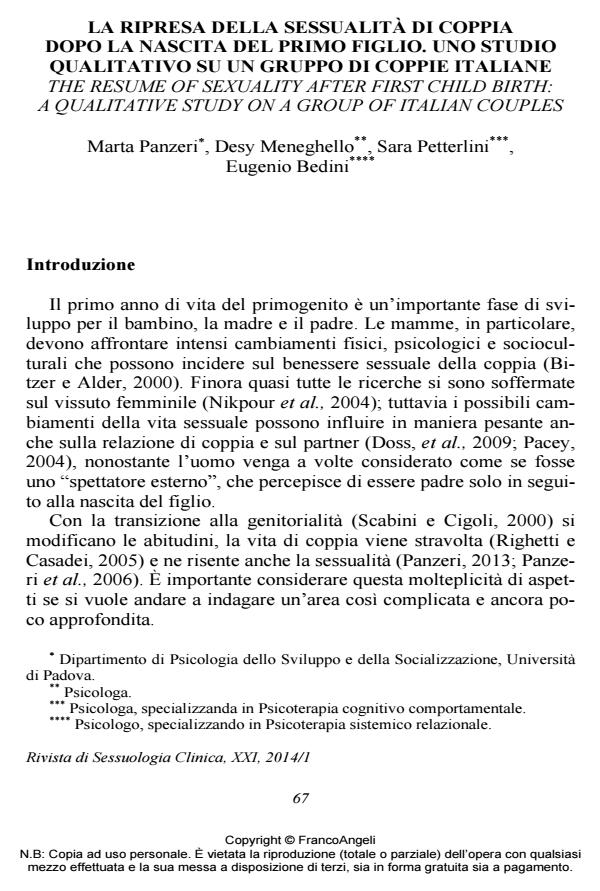The resume of sexuality after first child birth: a qualitative study on a group of italian couples
Journal title RIVISTA DI SESSUOLOGIA CLINICA
Author/s Marta Panzeri, Desy Meneghello, Sara Petterlini, Eugenio Bedini
Publishing Year 2014 Issue 2014/1
Language Italian Pages 21 P. 67-87 File size 78 KB
DOI 10.3280/RSC2014-001004
DOI is like a bar code for intellectual property: to have more infomation
click here
Below, you can see the article first page
If you want to buy this article in PDF format, you can do it, following the instructions to buy download credits

FrancoAngeli is member of Publishers International Linking Association, Inc (PILA), a not-for-profit association which run the CrossRef service enabling links to and from online scholarly content.
The topic of the bio-psychological changes and new roles that the parental dyad lives after the first child’s birth is treated by literature, which points out the influence that those facts had on the sexual experience of the new parents (Bitzer and Alder, 2000). However, until nowadays, the research has been focusing on the female figure, almost ignoring the sexual changes in new fathers. This study was aimed to investigate, through focus groups on a sample of 19 couples in the municipality of Treviso, which aspects, among those indicated in the literature, influence on the restarting of the sexual activity of the couple. The most relevant topics, emerged during the discussions are: Physical problems linked to the childbirth; fear of feeling/causing pain; woman’s awe of not being attractive anymore because of body changes; daily routine; perception of the partner’s support; importance of the information given by professional figures.
Keywords: Sexuality, puerperium, primiparous, focus group, neo-father, neomother
Marta Panzeri, Desy Meneghello, Sara Petterlini, Eugenio Bedini, La ripresa della sessualità di coppia dopo la nascita del primo figlio. Uno studio qualitativo su un gruppo di coppie italiane in "RIVISTA DI SESSUOLOGIA CLINICA" 1/2014, pp 67-87, DOI: 10.3280/RSC2014-001004